People might have advised you to try oxygen bleach if you’re struggling to get difficult stains off your laundry without damaging it. The way you’ve probably heard it described is that it works just as effectively as regular bleach but is far safer and gentler – sounds too good to be true, right?
Actually, oxygen bleach is really as good as they say, and today I’ll explain how you can effectively use it on your laundry and how this seemingly magic powder works its wonders.
To use oxygen bleach for laundry, first, make sure to check your clothing’s washing instructions; the powder is gentler than regular bleach but can still damage delicate pieces. Then, map out your approach, and use 1-2 tablespoons (10-20 g) of oxygen bleach with your detergent for best results.
If you’re dealing with some truly stubborn stains and want to give oxygen bleach a try but don’t know where to start, this article is for you.
Below, you’ll find the ultimate beginner’s guide on oxygen bleach, including step-by-step instructions on how you can use it safely and efficiently, along with a detailed explanation of how the substance works, which will help you become better able to use it on different household items, not just clothing. Let’s begin!
1. Check Your Clothing’s Washing Instructions
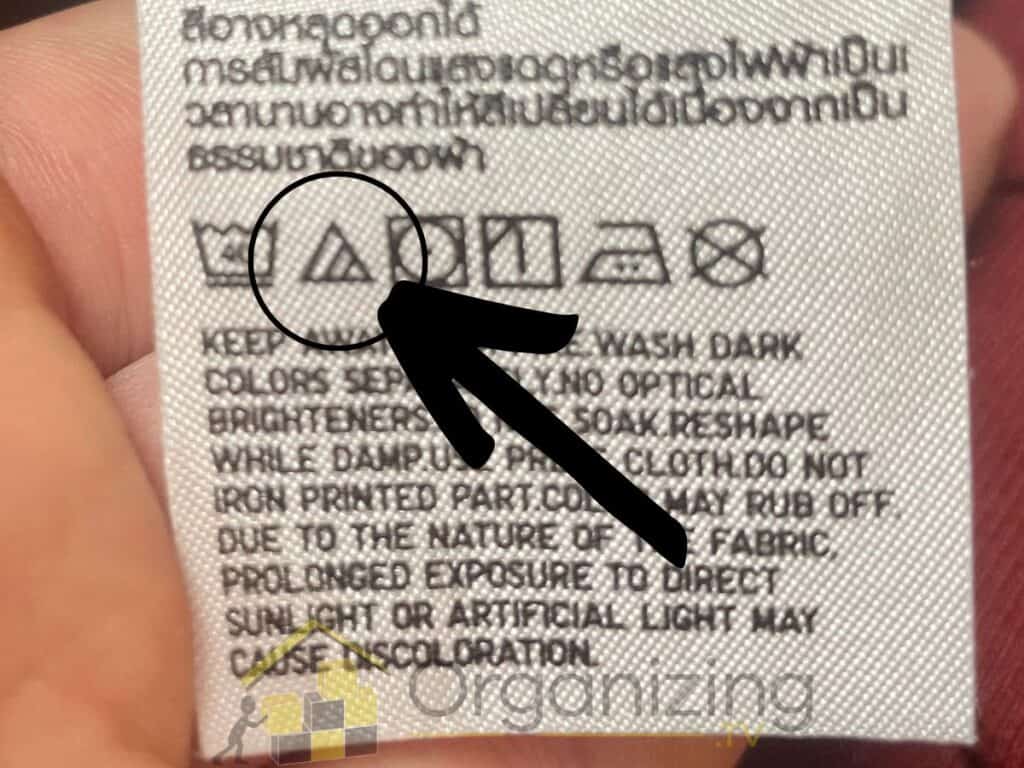
Before you even think about using oxygen bleach on your clothes, you should check their care labels first. While, as I’ll also explain in one of the following sections, oxygen bleach is significantly gentler than its traditional counterpart, there are still some delicate fabrics that could get irreparably damaged from coming in contact with it.
The last thing you want when trying to get your clothes sparkly clean is to ruin them altogether. While, as mentioned, it’s always best to check each garment’s care label, here are a few general tips to keep in mind when it comes to fabrics that don’t agree with oxygen bleach:
- Never use any type of bleach, oxygen bleach included, on wool or silk.
- Don’t use oxygen bleach on clothing with wooden buttons.
- Be careful when using oxygen bleach on black clothing.
Other than that, you’re usually good to go! Most other fabrics and colors won’t be damaged by coming in contact with oxygen bleach. The same goes for patterns, no matter how bold or colorful they are.
2. Read Package Instructions
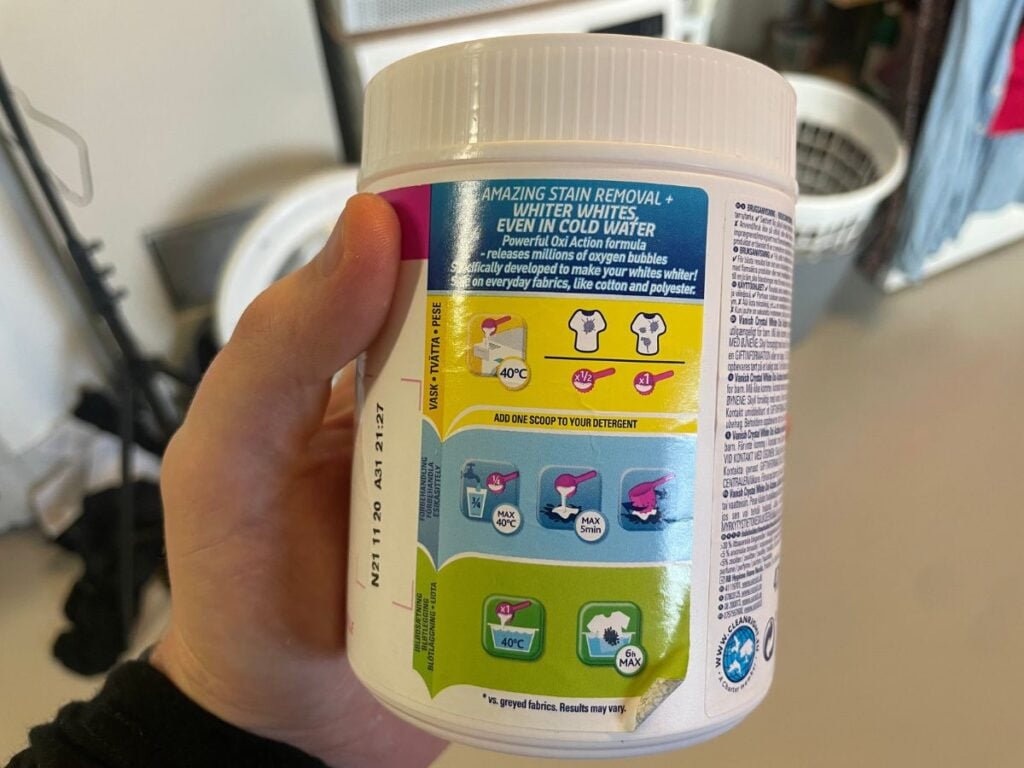
This guide takes you through a generalized step-by-step approach to using oxygen bleach. However, not all products of this nature are created the same, which is why I highly recommend reading the package instructions of your oxygen bleach before proceeding any further.
Who knows? Maybe the brand you’ve purchased can only get dissolved when the water’s above a certain temperature and is a bit strong and can’t be used on your delicates. You’ll never know if you don’t check the instructions.
The manufacturer will also guide you on ideal use cases and ratios, which is information you won’t want to miss out on. While you’re at it, make sure to read storage and use instructions as well. That way, you’ll be able t make sure that your oxygen bleach is working optimally and that you remain safe while using it.
While, again, specific directions vary from brand to brand, here are some general tips you’ll want to consider:
- Store dry bleach in a dry, dark, cool place. As I’ll also explain in the last section of this article, moisture activates oxygen bleach, which is why storing it in excessively humid spaces can trigger the product to activate prematurely, ruining it as a result. Excessive light and heat, on the other hand, can accelerate the product’s deterioration rate, meaning the bleach will lose most of its potency well before the expiration date.
- Make sure the tools you use when working with oxygen bleach, as well as your hands are also dry. The reasoning behind this has already been explained above.
- Limit oxygen exposure as much as possible. Oxygen exposure can also contribute to your oxygen bleach deteriorating faster, so make sure to seal the package tightly in between uses.
3. Figure Out Your Approach
By this point, you’ve (hopefully) decided that using oxygen bleach is safe. Now it’s the time to map out your plan of action and figure out your approach. For example, are you planning to wash a full laundry load with oxygen bleach or simply looking to get out a single stubborn stain?
This step-by-step guide takes you through the first scenario; however, I’ll also be covering how you can get out individual stains below.
I also want to note that, throughout this piece, I’ve assumed that your oxygen bleach is in powder form since that’s usually the most popular option. However, if yours is a liquid, you can still follow the same steps to get the results you want.
This is also the time to determine how hot the water you use needs to be in order for the oxygen powder to be fully dissolved.
4. Use a Warm or Hot Water Setting
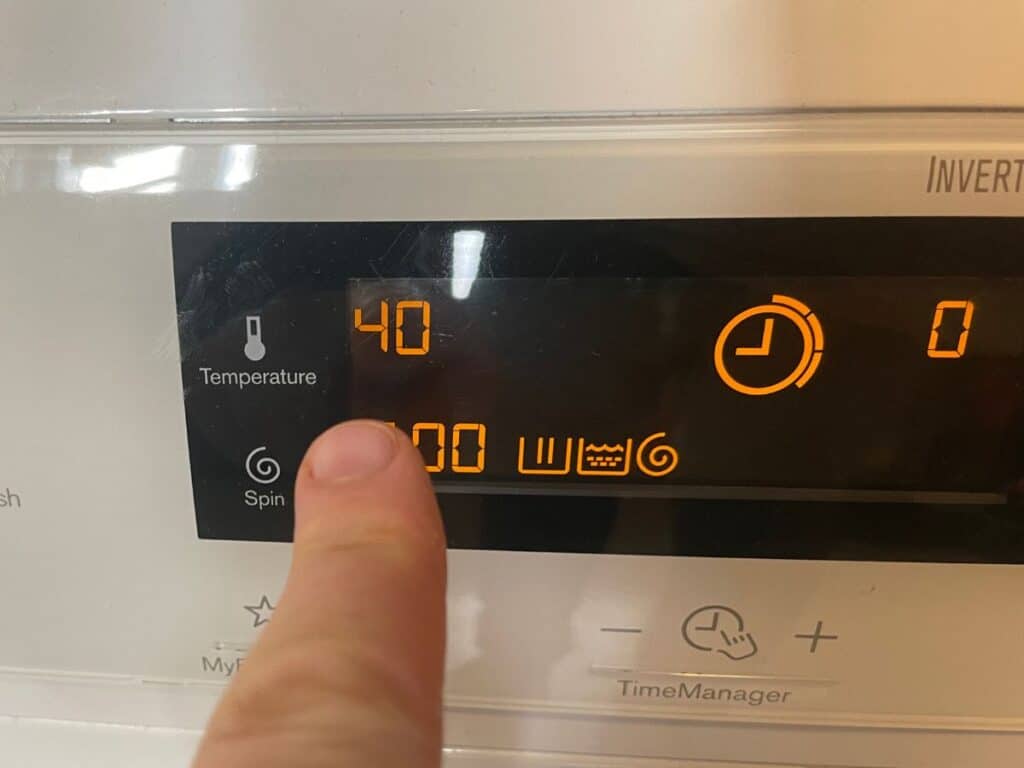
The reason why I suggested figuring out beforehand the water temperature at which your specific oxygen bleach product gets dissolved is that you’ll find a lot of inconsistencies across brands.
Most types of oxygen bleach are supposed to be used with water of any temperature; however, if you don’t have an exact temperature to refer back to, it’s usually best to use a warm or hot water setting. If you’re working on a single stain, you’ll want to dissolve the powder in water that’s at least lukewarm as well.
So, when you select the settings of your washing machine cycle (before you even add in the bleach itself or detergent), keep this piece of information in mind.
5. Add 1-2 Tablespoons of Oxygen Bleach
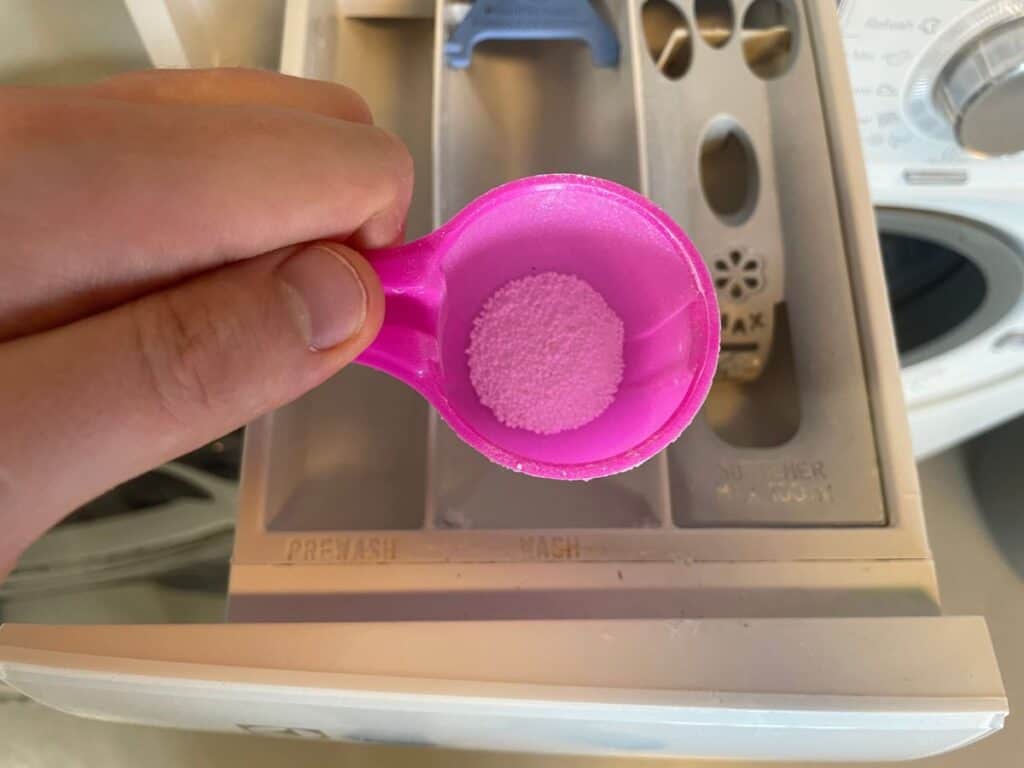
Now for the part you’ve been waiting for – it’s time to add the oxygen bleach. Keep in mind that this type of product, though gentle, is still very potent, and a little bit goes a long way. This is especially true if your oxygen bleach is in powder form, which is usually far more concentrated than its liquid counterpart.
For general use, a tablespoon (10 g) of oxygen bleach, along with your detergent, should do the trick just fine. You don’t have to do anything special with it; you’ll simply add it to the detergent slot in your machine.
If your clothes are extremely stained and you want to go that extra mile, double the amount of oxygen bleach you add (increase it to two tablespoons or 20 g). However, make sure not to use this approach on delicate clothing on which you’d be worried about using oxygen bleach in the first place.
What’s more, the powder is far more potent than you’d think, so I usually recommend using a single tablespoon (10 g) to start. If that doesn’t work, you can always take the clothing through a second wash cycle with oxygen bleach.
If you’re still unsure about how much oxygen bleach to use or you have an unusually big load of laundry to clean, another great rule of thumb is to use one tablespoon (10 g) of the powder for every 5 kg (11 lbs) of clothing.
Now that that’s cleared up, you might be wondering what the right dosage would be if you were to use oxygen powder on a single stain, not a whole laundry load. In that case, you can combine ½ a tablespoon (5 g) of oxygen bleach powder with about 473 ml (16 ounces) of water.
Then, apply the solution directly to the stain and let it sit for a few minutes. Afterward, you can wash it as usual, using only your detergent. Depending on how stubborn the stain is or how many of them you want to attend to, you can make the solution a bit more concentrated or make a second batch if necessary.
6. Add Detergent

Though using oxygen bleach alone in a wash cycle is usually fine, I’d urge you to use it in conjunction with your normal detergent. That’s because oxygen bleach tends to leave a bit of residue behind, which your detergent will be able to lift right off your clothing.
So, add as much detergent as you’d normally use to the same drum where you’ve added your oxygen bleach. With that, most of your job is done. All that’s left to do is to add your laundry load to the washing machine and start the cycle.
Finding a good-quality detergent can be pretty challenging, especially considering how overcrowded the market has currently become with low-quality products that virtually do nothing. If you’re on a search for a mild detergent that’s worth your money, check out this article.
7. Add Your Clothes to the Washing Machine
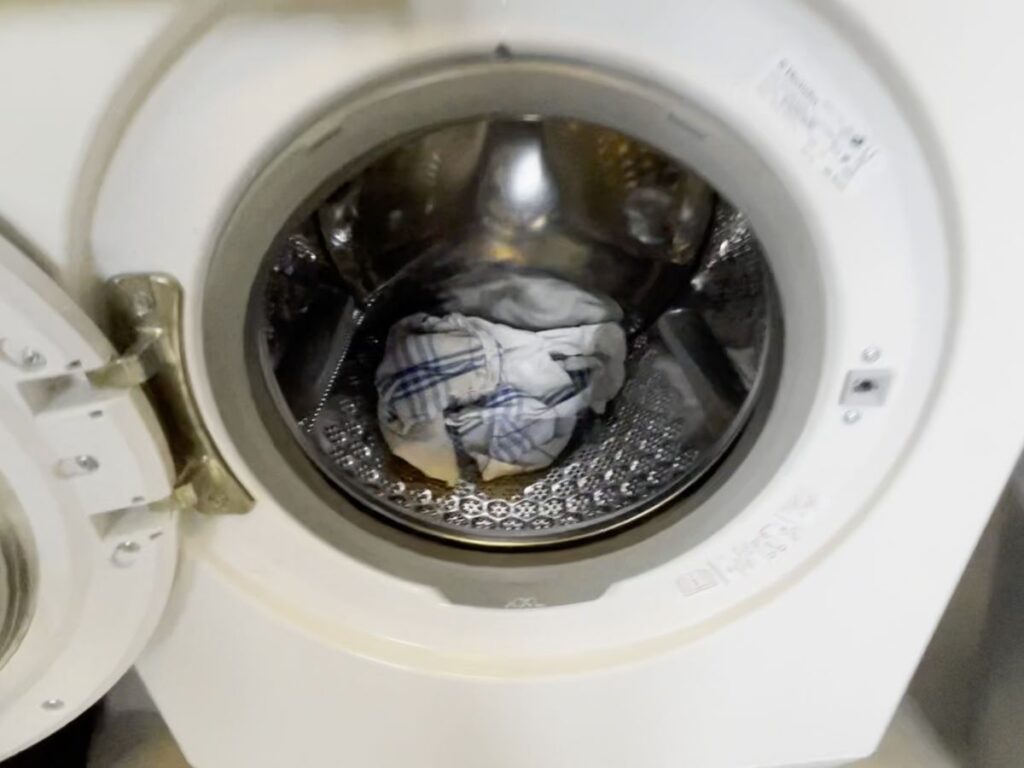
I recommend collecting a few garments with hard-to-get-off stains and washing them together in a cycle with oxygen bleach. That way, the process will be far less wasteful. So choose the clothes you want to get clean and veto them based on their materials before adding them to the washing machine.
8. Start the Washing Cycle
Your job is finally done. All that’s left to do is choose the rest of your preferred settings and press “Start” to get the wash cycle going. Your washing machine will take care of the rest. Once the clothes are out, inspect them to see whether the stains have been removed. Then, dry them according to their care labels and inspect them again for any remaining stains once they’re fully dry.
For the best results, select an anti-stain cycle, which can assist your oxygen bleach in lifting off those stubborn spills. Though not all washing machines offer this feature, see if you can find a cycle labeled “Stain Care” in yours.
Hopefully, they’ll be spotless. If not, either repeat the cycle with any still-stained garments, this time upping the oxygen bleach concentration or, better yet, apply the powdery solution directly to the remaining stains following the approach explained in the “Add 1-2 Tablespoons of Oxygen Bleach” section above.
How Oxygen Bleach Works
Now that you know how to effectively clean your clothes with oxygen bleach, it’s time to learn about the “why” behind the process. This knowledge can help you safely improvise with this type of product and use it to get stubborn stains off of surfaces and materials that can’t be simply thrown in a washing machine. Here’s what you’ll need to know:
The main active ingredient in oxygen bleach is sodium percarbonate. When this chemical substance comes in contact with water, it dissolves into hydrogen peroxide and sodium carbonate.
If you’ve been attending to difficult stains for long enough, you probably already know that hydrogen peroxide is an oxidizing agent that’s excellent at breaking down difficult stains by breaking their chemical bonds, effectively lifting them off the material they’ve soiled.
Since this type of product relies on oxygen, not any corrosive chemicals, to get stains off fabrics and surfaces, it’s not only safer on your clothes and furnishings but safer for your health as well. In the same vein, oxygen bleach is also far more environmentally-friendly than its traditional counterparts.
For the same reason, the product mixes well with all detergents, regardless of their form or variety, as it isn’t prone to any harmful reactions. All in all, oxygen bleach is a far better alternative to your run-of-the-mill bleach or chlorine, as it achieves the same results without exposing you to the same risks.
If you’re interested in trying it yourself, there are plenty of affordable, good-quality options on the market. If you want to cut the middle man altogether and get a detergent that’s already been mixed with oxygen bleach, there’s no shortage of excellent products you can buy either. To learn more about the best oxygen bleach detergents on the market, head over to my other article here.
Final Thoughts
Oxygen bleach has become a must-have in many households, as its ability to get off even the most stubborn stains without damaging the material it’s used on is nothing short of impressive. So, make sure to keep the above guide handy whenever you need to thoroughly clean your clothing or other fabrics around the house.
Keep in mind that, in some cases, you’ll have to experiment with ratios and strategies in order to get the results you want. Hopefully, this article can help you master the right techniques for using oxygen bleach in no time.
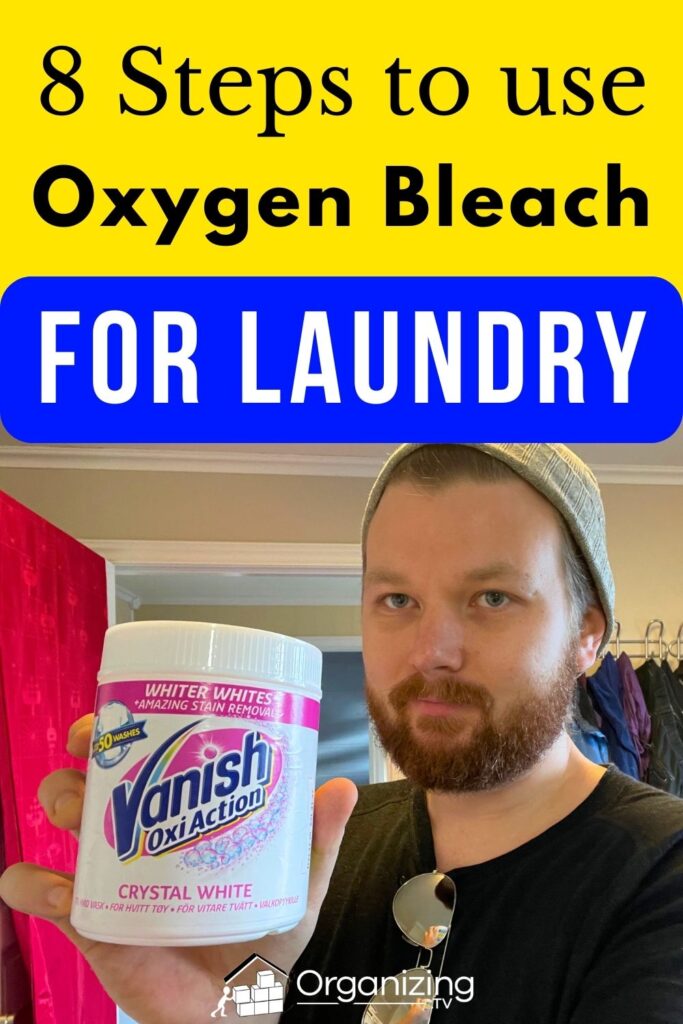

I’m an expert wardrobe organizer and a bit of a clean freak. I created this website and its YouTube channel to share practical guides about laundry and organizing. My teachings have been featured in multiple large news publications, and I’ve self-published two wardrobe organizing books and an entire course on the subject.

